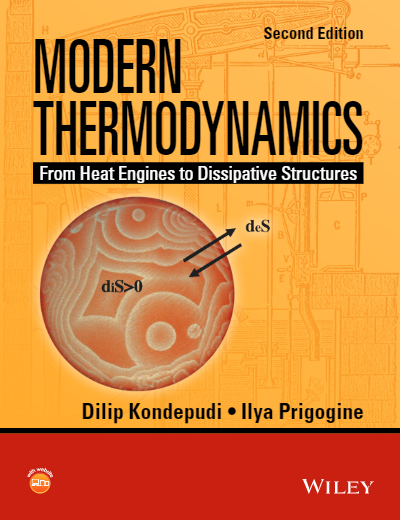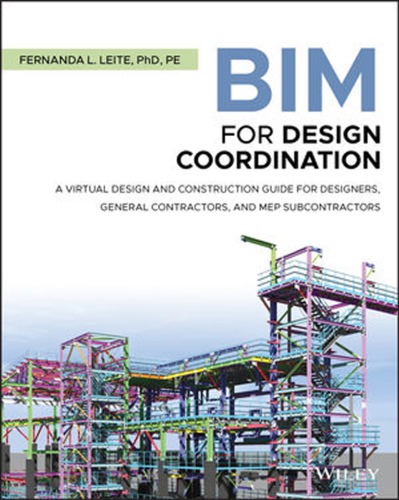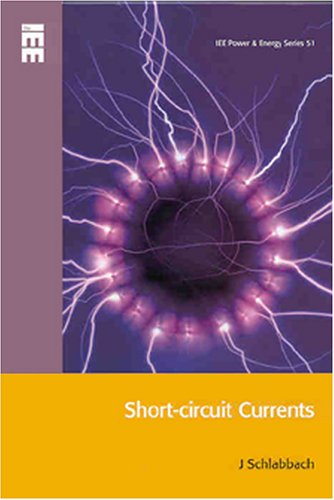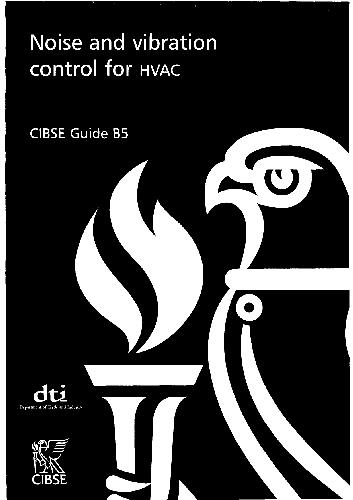| Book Name: | [PDF] Modern Thermodynamics From Heat Engines to Dissipative Structures |
| Category: | Mechanical Books |
| Language: | English |
| Format: | |
| Free Download: | Available |

| Book Details : | |
|---|---|
| Language | English |
| Pages | 552 |
| Format | |
| Size | 8.68 MB |
Modern Thermodynamics From Heat Engines to Dissipative Structures
Modern Thermodynamics From Heat Engines to Dissipative Structures 2nd Edition by Dilip Kondepud and Ilya Prigogine PDF Free Download
Modern Thermodynamics Contents
- Basic Concepts and the Laws of Gases
- The First Law of Thermodynamics
- The Second Law of Thermodynamics and the Arrow of Time
- Entropy in the Realm of Chemical Reactions
- Extremum Principles and General Thermodynamic Relations
- Basic Thermodynamics of Gases, Liquids, and Solids
- Thermodynamics of Phase Change
- Thermodynamics of Solutions
- Thermodynamics of Chemical Transformations
- Fields and Internal Degrees of Freedom
- Thermodynamics of Radiation
- The Gibbs Stability Theory
- Critical Phenomena and Configurational Heat Capacity
- Entropy Production, Fluctuations and Small Systems
- Nonequilibrium Thermodynamics: The Foundations
- Nonequilibrium Thermodynamics: The Linear Regime
- Nonequilibrium Stationary States and Their Stability: Linear Regime
- Nonlinear Thermodynamics
- Dissipative Structures
- Elements of Statistical Thermodynamics
- Self-Organization and Dissipative Structures in Nature
Preface to Modern Thermodynamics From Heat Engines
The first edition of this book was published in 1998 and we were pleased that it was well-received. It has been used in over 25 countries as a text for courses in physics, chemistry, and engineering, and it has been translated into French, Italian, Japanese, Portuguese, and Russian.
Thermodynamics as formulated in the twentieth century, what we chose to call ‘Modern Thermodynamics’ is a theory of irreversible processes in contrast to nineteenth-century thermodynamics, which is a theory of states.
In the latter, thermodynamics is confined to initial and final states, the processes that transform a state are not central to the theory; they are treated as another subject, ‘kinetics’. In Modern Thermodynamics, however, entropy-increasing irreversible processes are central to the theory.
In it, we find additional tools, such as the rate of entropy production, to characterize and analyze nonequilibrium systems, and new results, such as the Onsager reciprocal relations, that are applicable to the thermoelectric effect, thermal diffusion and other cross-effects.
The context in which thermodynamics is being taught is rapidly changing. Therefore we have added new sections to chapters, which show more applications of the subject.
The following is a partial list. In Chapter 2 we have included ‘energy flows’ in turbines and jet engines, and basics of renewable energies such as solar and wind energy.
We have also included a description of the hurricane as a heat engine in Chapter 3. Chapter 11 now has sections on nonequilibrium electromagnetic radiation. In Chapter 19, we have included rates of entropy production in dissipative structures.
In response to suggestions by users of this text, we have included a chapter on Statistical Thermodynamics, which makes this text self-contained by the inclusion of derivations of heat capacities of solids and Planck’s law of blackbody radiation.
Several other changes have been made to improve the presentation of the concepts. Entropy and entropy-producing irreversible processes are generally thought of as agents of disorder.
A central message of this book is that, under far-from-equilibrium conditions, irreversible processes are, in fact, the drivers of self-organization and order we see all around us in Nature.
These emergent structures, called dissipative structures, are distinct from machines and are a good thermodynamic basis on which we may begin to build a theory of biological organisms.
It is an important direction for future developments in thermodynamics. We have included a section on this topic in the final chapter.
Preface to Modern Thermodynamics From Heat Engines First Edition
Why Thermodynamics?
Since half a century ago, our view of Nature has changed drastically. Classical science emphasized equilibrium and stability. Now we see fluctuations, instability, evolutionary processes on all levels from chemistry and biology to cosmology.
Everywhere we observe irreversible processes in which time symmetry is broken. The distinction between reversible and irreversible processes was first introduced in thermodynamics through the concept of ‘entropy’, the arrow of time, as Arthur Eddington called it.
Therefore our new view of Nature leads to an increased interest in thermodynamics. Unfortunately, most introductory texts are limited to the study of equilibrium states, restricting thermodynamics to idealized, infinitely slow reversible processes.
The student does not see the relationship between irreversible processes that naturally occur, such as chemical reactions and heat conduction, and the rate of increase of entropy.
In this text, we present a modern formulation of thermodynamics in which the relation between the rate of increase of entropy and irreversible processes is made clear from the very outset. Equilibrium remains an interesting field of inquiry but in the present state of science, it appears essential to include irreversible processes as well.
It is the aim of this book to give a readable introduction to present-day thermodynamics, starting with its historical roots as associated with heat engines but including also the thermodynamic description of far-from-equilibrium situations.
As is well known today, far-from-equilibrium situations lead to new space-time structures. For this reason, the restriction to equilibrium situations hides, in our opinion, some essential features of the behavior of matter and energy. An example is the role of fluctuations.
The atomic structure of matter leads to fluctuations. However, at equilibrium or near equilibrium, these fluctuations are inconsequential. Indeed a characteristic feature of equilibrium thermodynamics is the existence of extremum principles.
For isolated systems entropy increases and is therefore maximum at equilibrium. In other situations (such as constant temperature) there exist functions called thermodynamic potentials which are also extrema (that is maximum or minimum) at equilibrium.
This has important consequences. A fluctuation that leads to a temporal deviation from equilibrium is followed by a response that brings back the system to the extremum of the thermodynamic potential. The equilibrium world is also a stable world.
This is no longer so in far-from-equilibrium situations. Here fluctuations may be amplified by irreversible dissipative processes and lead to new space-time structures which one of us (I. Prigogine) has called ‘dissipative structures’ to distinguish them from ‘equilibrium’ structures such as crystals.
Therefore the distance from equilibrium becomes a parameter somewhat similar to temperature. When we lower the temperature, we go from the gaseous state to a liquid and then a solid. As we shall see, here the variety is even greater.
Take the example of chemical reactions. Increasing the distance from equilibrium we may obtain in succession oscillatory reactions, new spatial periodic structures, and chaotic situations in which the time behavior becomes so irregular that initially, close trajectories diverge exponentially.
One aspect is common to all these nonequilibrium situations, the appearance of long-range coherence. Macroscopically distinct parts become correlated.
This is in contrast to equilibrium situations where the range of correlations is determined by short-range intermolecular forces. As a result, situations that are impossible to realize at equilibrium become possible in far-from-equilibrium situations.
This leads to important applications in a variety of fields. We can produce new materials in nonequilibrium situations where we escape from the restrictions imposed by the phase rule. Also, nonequilibrium structures appear at all levels in biology.
We give some simple examples in Chapters 19 and the postface. It is now generally admitted that biological evolution is the combined result of Darwin’s natural selection as well as of self-organization, which results from irreversible processes.
Since Ludwig Boltzmann (1844–1906) introduced a statistical definition of entropy in 1872, entropy is associated with the disorder.
The increase of entropy is then described as an increase of disorder, as the destruction of any coherence that may be present in the initial state. This has unfortunately led to the view that the consequences of the Second Law are self-evident, are trivial.
This is, however, not true even for equilibrium thermodynamics, which leads to highly nontrivial predictions. Anyway, equilibrium thermodynamics covers only a small fraction of our everyday experience.
We now understand that we cannot describe Nature around us without an appeal to nonequilibrium situations.
The biosphere is maintained in nonequilibrium through the flow of energy coming from the Sun and this flow is itself the result of the nonequilibrium situation of our present state of the universe.
It is true that the information obtained from thermodynamics both for equilibrium and nonequilibrium situations is limited to a few general statements.
We have to supplement them by the equation of state at equilibrium or the rate laws, such as chemical reaction rates. Still, the information we obtain from thermodynamics is quite valuable precisely because of its generality.
Modern Thermodynamics: From Heat Engines to Dissipative Structures PDF
Author(s): Dilip Kondepudi, Ilya Prigogine
Publisher: Wiley, Year: 2014
ISBN: 111837181X
Download Modern Thermodynamics From Heat Engines to Dissipative Structures PDF Free
Related Results : modern thermodynamics from heat engines to dissipative structures,modern thermodynamics from heat engines to dissipative structures pdf,modern thermodynamics from heat engines to dissipative structures solutions,
Related More Books
See More POST On : Engineering Books









![[PDF] Draw Buildings and Cities in 15 Minutes Draw Buildings and Cities in 15 Minutes pdf](https://www.freepdfbook.com/wp-content/uploads/2021/06/Draw-Buildings-and-Cities-in-15-Minutes-218x150.jpg)








![[PDF] Digital Image Processing An Algorithmic Introduction Using Java Digital Image Processing An Algorithmic Introduction Using Java](https://www.freepdfbook.com/wp-content/uploads/2022/06/Digital-Image-Processing-An-Algorithmic-Introduction-Using-Java.jpg)




![[PDF] 43 Years JEE ADVANCED + JEE MAIN Chapterwise & Topicwise Solved Papers 43 Years JEE ADVANCED (1978-2020) + JEE MAIN Chapterwise & Topicwise Solved Papers Physics PDF](https://www.freepdfbook.com/wp-content/uploads/2022/03/43-Years-JEE-ADVANCED-1978-2020.jpg)

![[PDF] Problems in Physical Chemistry for JEE (Main & Advanced) Problems in Physical Chemistry for JEE (Main & Advanced) Free PDF Book Download](https://www.freepdfbook.com/wp-content/uploads/2022/03/Problems-in-Physical-Chemistry-for-JEE-Main-Advanced.jpg)
![[PDF] Engineering Physics (McGraw Hill)](https://www.freepdfbook.com/wp-content/uploads/2021/05/bafc8c2685bb6823a9c56134f7fba5df.jpeg)

![[PDF] Engineering Chemistry By Shashi Chawla](https://www.freepdfbook.com/wp-content/uploads/2022/05/Theory-And-Practicals-of-Engineering-Chemistry-By-Shashi-Chawla-free-pdf-book.jpeg)
![[PDF] Chemistry: An Introduction to Organic, Inorganic & Physical Chemistry Chemistry: An Introduction to Organic, Inorganic & Physical Chemistry](https://www.freepdfbook.com/wp-content/uploads/2022/04/Chemistry-An-Introduction-to-Organic-Inorganic-Physical-Chemistry.jpg)
![[PDF] Essentials of Physical Chemistry Essentials of Physical Chemistry Free PDF Book by Bahl](https://www.freepdfbook.com/wp-content/uploads/2022/04/Essentials-of-Physical-Chemistry-bahl.jpg)
![[PDF] Biological control of plant-parasitic nematodes: soil ecosystem management in sustainable agriculture Biological control of plant-parasitic nematodes: soil ecosystem management in sustainable agriculture](https://www.freepdfbook.com/wp-content/uploads/2022/05/Biological-control-of-plant-parasitic-nematodes-soil-ecosystem-management-in-sustainable-agriculture.jpg)
![[PDF] Human Anatomy: Color Atlas and Textbook Human Anatomy: Color Atlas and Textbook Free PDF Book](https://www.freepdfbook.com/wp-content/uploads/2022/05/Human-Anatomy-Color-Atlas-and-Textbook.jpg)
![[PDF] Concepts of Biology Book [Free Download]](https://www.freepdfbook.com/wp-content/uploads/2022/05/Concepts-of-Biology.jpg)
![[PDF] Essentials of Biology [Free Download] Essentials of Biology Free PDF BOok Download](https://www.freepdfbook.com/wp-content/uploads/2022/05/Essentials-of-Biology-Free-PDF-Book-Downlaod.jpg)
![[PDF] Human Biology Book [Free Download]](https://www.freepdfbook.com/wp-content/uploads/2022/05/PDF-Human-Biology-Book-Free-Download.jpg)


